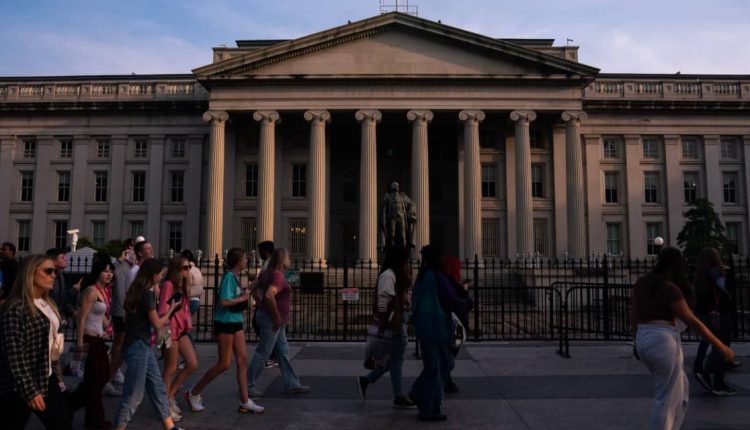The Treasury Department expects to issue less debt in the fourth-quarter than it previously expected. Bond investors now await verdict on the composition of this debt; its likely to steer yields ahead.
Additional supply on any part of the curve typically leads to investors demanding more yield to buy that debt from the pool of choices. So if the government opts more for long-term debt, the yields or returns on longer issues are likely to rise further. However, if the government decides to fund its deficit with more Treasury bills–debt of less than one year–the yield on the shorter end could move higher or stay elevated.
The government releases this data in its “Quarterly Refunding” report on Wednesday, at 8:30 a.m. Eastern.
Supply is just one driving factor for yields. But given the wide expectation of a pause in the Federal Reserve’s interest rate hiking cycle come Wednesday and with inflation firmly down from its last year’s peak, supply has come in focus.
“Our macro clients note that the Treasury Quarterly Refunding is arguably more important than the FOMC meeting” wrote Fundstrat head of research Tom Lee on Monday. “How the Treasury announces its coming mix of bonds, this will be market moving.”
Treasury in August said it expects “further gradual increases” of medium- to long-dated debt after increasing the auction sizes for 2-year, 5-year, and 10-year debt by $3 billion a month; the 3-year note and the 30-year bond by $2 billion a month; and the 7-year and the 20-year by $1 billion a month.
Strategists at Wall Street’s biggest bank are now in distinct camps about future increases:
Citigroup
‘s Williams predicts “a sizable increase” to long- and medium-term bonds versus the August figures. That’s partly because he thinks Treasury is “unlikely” to allow T-bills to capture even more share of the market, he wrote on Oct. 20.
The Treasury Borrowing Advisory Committee recommends allocating 15% to 20% to T-bills. Last month, that share of marketable debt rose to 20.4% as many dealers had expressed comfort in “temporarily exceeding” the range as demand remained high in August.
“Longer term, we think Treasury will want to bring this down and that is only achievable by running at least two more rounds (Nov+Feb) of auction increases,” Williams wrote.
In contrast, Deutsche Bank’s strategist, Steven Zeng, anticipates the Treasury to slow the pace of issuance for the 10-year and 30-year bonds as yields on those securities have moved higher. Plus, recently there was weak demand seen at the 10-year and 30-year auctions, he argued last week Tuesday.
Morgan Stanley’s Guneet Dhingra also expects a slower issuance of medium- to longer-dated debt than in August primarily due to the rise in term premium, the added yield or return that investors are demanding to hold a long-term bond rather than short-term debt.
To be sure, the term premium, although in the positive territory—at 0.38%—for the first time in more than two years, still looks low. The average during the five years before the 2007-2008 financial crisis was 1.22%.
Plus, changing the tempo, say to issue more long-term bonds to lock in rates at today’s levels, would contradict the Treasury’s “regular and predictable” principle and lean toward being opportunistic; an act that can introduce volatility.
“So there’s a balancing act, which I think they are going to have to figure out what they want to do or do cost-benefit analysis from that perspective,” said John Madziyire, head of U.S. Treasuries and TIPS at Vanguard Fixed Income Group.
The Treasury wouldn’t create “uncertainty around issuance patterns” and should opt for a repeat of the increase in auction sizes as it did in August, Meghan Swiber at BofA Global Research wrote.
The decision will come after Treasury’s decision on Monday to lower its borrowing expectation for the October to December quarter to $776 billion, $76 billion lower than the estimate it shared on July 31.
The lower amount, which reflects higher payments coming from taxpayers in the fourth quarter after the Internal Revenue Service in many cases gave extra time, would still be a record for that quarter.
After the decision, the 10-year yield closed at 4.875% on Monday, rising for six consecutive months. The 30-year at 5.034% marked four consecutive months of gains.
The Treasury’s decision on Wednesday could raise these yields further, tighten financial conditions–the 10-year is the benchmark for rates on mortgages, credit card—and decide investor’s expectation on future issuance patterns. The bond market will be watching—closely.
Write to Karishma Vanjani at [email protected].
Read the full article here

